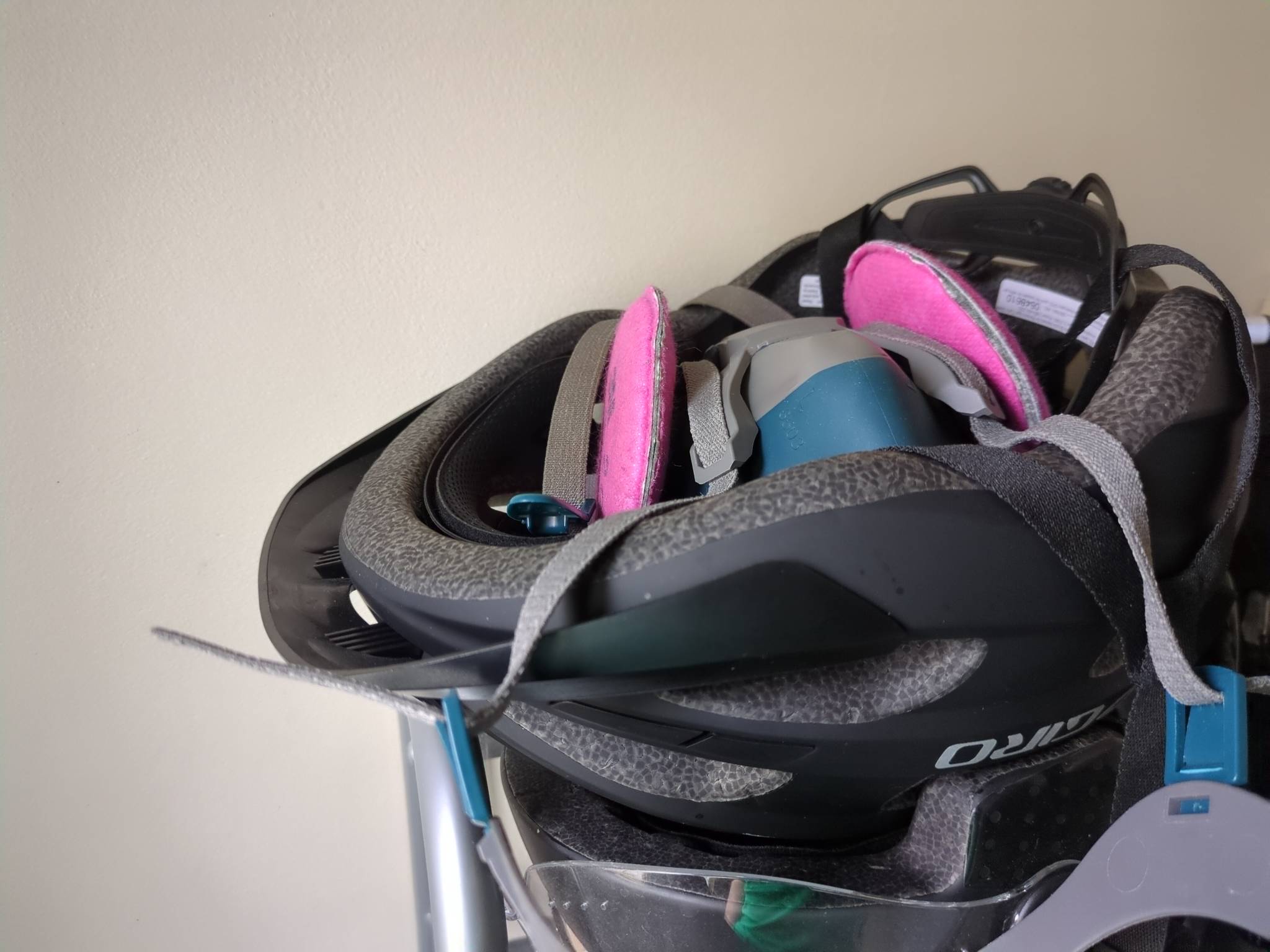Are microplastics from car tyres contributing to heart disease?
"Add one more likely culprit to the long list of known cardiovascular risk factors including red meat, butter, smoking and stress: microplastics.
“In a study released Wednesday in the New England Journal of Medicine, an international team of physicians and researchers showed that surgical patients who had a build-up of micro and nanoplastics in their arterial plaque had a 2.1 times greater risk of nonfatal heart attack, nonfatal stroke or death from any cause in the three years post surgery than those who did not.”
The research is particularly noteworthy, given that one of the biggest sources of microplastic pollution is the synthetic rubber in car tyres: https://aus.social/@ajsadauskas/112015017609398126
So it’s not just the sedentary lifestyles that car-dependent planning encourages that’s causing health issues.
And it’s not just exhaust fumes either.
There’s also the health impacts of microplastics, including from car tyres.
Worth noting as well that internal documents from the big oil companies show that they knew since the 1970s that recycling wasn’t going to solve the problem of plastic pollution. They promoted it anyway: https://aus.social/@ajsadauskas/112064312364853769
#tyres #tyre #car #microplastic #microplastics #pollution #environment @fuck_cars #fuckcars
This is the elephant in the room no one wants to talk about or admit. Even in large environmental groups, if you bring this subject up at a meeting no one will say a word as everyone drives to the meetings.
There are things that can be done though to reduce this until an alternative to the materials used in tires is found.
For example, buy local as much as possible, and opt for purchasing items within walking distance on your local street or within quick hop of your local tram/street car/subway network. (This second part may not be possible in a car centric north american city/suburban neighborhood). Opt to use a bicycle over a car to reduce your footprint in tire use (it’s still the same rubber but two less tires). Biking has the added benefit of no exhaust.
Advocate for dedicated and protected cycle lanes on roads and streets so our children and community can cycle without fear of being hit by a car, as well as push your towns and cities for bicycle corridors/trails. Bicycle corridors are cycling trails that are not on a street and far from any car traffic and are more enjoyable for larger distances.
Other larger scale items that you can advocate for include urging shipping companies to prioritize rail over trailers for long distances, and opting to use small delivery vans for the last mile delivery inside town as opposed to 50 footer trailers. This has the added benefit of smaller streets and more vibrant and livable city centers. Also allowing customers to pickup deliveries in person using public transit such as trams/street cars/subway. There should not be a reason pickup centers should be located in areas that individuals can only reach by driving.
Vote and urge your towns and cities to implement more rail and subway systems. Use public transportation as much as possible and urge your cities and municipalities to implement more frequent and dedicated transportation routes. Each car lane and car parking lot removed or converted in your city is a step in the right direction (though it may not feel like it at first), for overall health and wellbeing for your neighbors and yourself.
@NarrativeBear @ajsadauskas What environmentalists really don’t want to talk about is that sustainability means slowing down, traveling less, more manual effort, fewer chemical conveniences. B/c it seems politically impossible.
And it goes against “sustained economic growth”, though I always found infinite growth is both unsustainable and environmentally detrimental.
@NarrativeBear @ajsadauskas Meanwhile there’s an over-abundance of shovel-ready jobs cleaning up human impacts & restoring nature, just waiting for us to prioritize it over billionaires’ & $100M-aires’ insatiable greed & lust for power
@Simplicator @NarrativeBear Our whole economy is geared towards disposable consumerism.
Yeah, we could make sturdy wooden chairs like the ones your grandma had at her dining table for 50-odd years.
Or we could get new plastic chairs every five years or so from IKEA.
The way things are set up, making 10 disposable chairs that last five years is far better for the economy than making one chair that lasts 50.
There are plenty of things that could be user serviceable, repairable, repurposable or upgradable that aren’t because our economy is geared towards disposable consumerism.
Even look at the economic measuring stick we use: GDP.
If using economic activity as the measure of the health of your economy, then it’s far better to manufacture 10 chairs instead of one.
But what if we were to use a different set of economic measurements? For example, the utility we gain from our goods, and many natural resources it takes to achieve that level of utility?
By that measurement, manufacturing 10 chairs over 50 years instead of one for the same utility (sitting down during dinner) is a monumental waste.
Opt to use a bicycle over a car to reduce your footprint in tire use (it’s still the same rubber but two less tires). Biking has the added benefit of no exhaust.
Absolutely, and not only do bicycles have two less tires, the tires are way smaller and have less road contact and overall wear. The difference is huge. I would love to see the numbers on average car tire microplastics pollution vs bicycles.
until an alternative to the materials used in tires is found.
Car tires ARE made of the alternative materials.
Pneumatic tires were originally all natural rubber until synthetics were added due to war shortages.
Just a small aside, your points are all spot on.
Pneumatic tires have always been made of vulcanised rubber though. Natural rubber is way too soft to hold up in this application.
Vulcanised rubber is a bio-based plastic, but being bio-sourced has nothing do with it being biodegradable. And vulcanised rubber isn’t.
There are bio-based-plastics that aren’t biodegradable, and fossil-based plastics that are biodegradable.
Legit asking:
Up until relatively recently, the layman’s understanding of pollution was mostly focused on exhaust.
What caused the general shift in focus to microplastics, and by direct extension tire ware?
Electric cars. We have a solution to the exhaust problem now, but none of the other issues are solved so they are being more heavily emphasised, and with electric cars being touted as an environmental solution it’s more important to point out the issues that they don’t solve and that we need to go further.
Okay, thanks! That was super informative!
Awareness mostly. The general public didn’t really know anything about micro plastics until like 2023.
deleted by creator

I have 2 respirators on rotation and one gets stored with my bike helmet. I clean them with brewery soap. It adds a little bit of resistance when breathing but the smog and dust make it much harder to breath without the respirator than with.
deleted by creator
Probably to a degree, but seeing as we store almost all our food and beverages in plastic I feel like they’re the more significant cause.
https://www.thedrive.com/news/tire-dust-makes-up-the-majority-of-ocean-microplastics-study-finds
Majority of microplastics in the environment are specifically tire dust. And the particles are so fine they get into our blood through our lungs.
“Seventy-eight percent of ocean microplastics are synthetic tire rubber, according to a report by the Pew Charitable Trust.” - https://e360.yale.edu/features/tire-pollution-toxic-chemicals#:~:text=a lot longer.-,Seventy-eight percent of ocean microplastics are synthetic tire rubber,by the Pew Charitable Trust.
Plastic is bad, but if you are talking about microplastics, plastic items that’s aren’t “wear items” are not a significant source of them.
@PowerCrazy @NotBillMurray You have to define “wear items” to include plastic packaging for that to be true. Probably also food and water processing as well, like plastic pipes.
I should have clarified, they aren’t a significant source of microplastics until disposal, since plastic disposal is a fiction. I.e. If you have a plastic water bottle and you drink the water, you aren’t going to get any significant micro-plastic just because the water was stored in plastic. Same with PVC piping for water, or whatever. However if you have a road near a body of water, you will get a very significant amount of microplastics buildup in that water that is much greater then from water stored in a bottle. In the long term, all plastic becomes micro-plastic and gets everywhere, but wear items are absolutely the leading cause in both volume and the cause of increasing microplastics around the world.
I.e. If you have a plastic water bottle and you drink the water, you aren’t going to get any significant micro-plastic just because the water was stored in plastic. Same with PVC piping for water, or whatever.
Are you sure about that? I’m asking because I recently saw a story where they measured microplastics in a beverage from a plastic water bottle and found that it was a lot higher than previously thought, but I don’t remember reading how harmful it is.
@PowerCrazy Actually plastic water bottles leave water they contain LOADED with microplastics:
https://www.npr.org/2024/01/10/1223730333/bottled-water-plastic-microplastic-nanoplastic-study
It’s not out of the question that the significant health risks we’re finding for ultraprocessed food are partly, or even mostly, from microplastics introduced in processing or storage.
Wear makes microplastic issues much worse, yes, but plastic is turning out to be quite bad enough even new.
This is also a contributing factor, and all these things really play a role in affecting our overall health and wellbeing as a whole. Each issue should be equally reviewed and solutions proposed. What we should not do is play one issue against another as “more bad”, but instead tackle each problem with the same amount of enthusiasm and energy.
That being said plastics, specific plastic garbage is a large issue, especially when that garbage becomes littered on our streets.
Have you all noticed how if you look around your towns it has started to feel more dirty and unclean in the last 15-20 years. Walking down a trail you may find if you start collecting litter you may end up with three or four garbage bags full, and not even feel like you made a significant dent in the area.
It does not help most of our garbage and litter has become significantly non-degradable so it essentially can stick around for generations.
Imagine if everyone that went out for a picnic with today’s wrappers and packaging and did the following as shown in this video link below.
It’s spelled “tires.”
@Etterra Because I’m not in America, I prefer to use the correct English spelling.
Which, according to the Oxford English Dictionary, is tyre: https://www.oxfordlearnersdictionaries.com/definition/english/tyre
Not to be confused with tire, as in: “I tire of the American misspellings of words” ☺️










